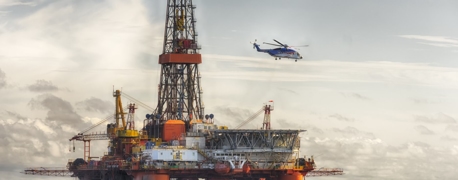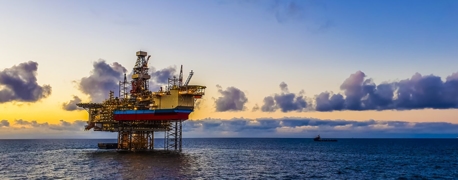How Tugboats Keep Ports Safe

As container vessels get larger and larger, their ability to navigate safely through narrow channels or in bad weather gets worse. Over the last couple decades, tugboats have become an even more critical part of port infrastructure.
The Dali’s allision with the Francis Scott Key Bridge in Baltimore in March 2024 made clear how important tugs are to keeping ports safe. At the same time, most people don’t know how critical these small-but-mighty vessels are.
What Are Tugs?
Tugboats, or “offshore support vessels,” serve numerous functions on the coast, in ports, and even further out at sea. Advanced tugs are often fitted for multiple jobs to make them as versatile as possible. As a result, tugs are used for firefighting, supply runs, rescue missions, coastal patrols, and (of course) port navigation/escort.
Given their versatility, tugboats are mostly defined by a few key features:
- High power-to-weight ratio (PWR)
- Precise maneuverability and thrust
- Seated low in the water (deep draft) to increase thrust
In essence, tugboats are mostly engine. The PWR of a typical tug is 8–9 times the PWR of a typical container vessel. Consequently, a tug can move a vessel 1000 times its size and weight, which is what makes it critical for helping container vessels navigate narrow channels.
Bollard Pull & Tugboats
Though every tugboat engine has a horsepower rating, horsepower isn’t an accurate measure of a tugboat’s potential. That’s because traditional horsepower measures force at a given speed, but tugboats exert thrust at extremely low speeds (or even no speed at all).
So, we use bollard pull to describe how powerful a tug is.
Bollard pull is the amount of force exerted by a tugboat on a pulled object. It’s essentially the maritime equivalent of the drawbar pull for tractors. It measures pulling power, but also describes a tug’s ability to remain in place amidst strong ocean forces.
There are two types of bollard pull:
- Static (or max): the highest force measured in a bollard pull test.
- Steady (or continuous): the average force over an interval of time, typically 10 minutes.
Recent tugboat designs have a bollard pull of around 110 tons or more, but some go even higher. The strongest bollard pull of any tug belongs to the Island Victory at 526 tons.
How Tugs Control Ships 1000 Times Heavier & Larger
There are two design features that make it possible for tugs to control enormous vessels with precision: a powerful winch and a highly flexible propulsion system.
The winch is controllable from the bridge, allowing the operator to extend or retract tow lines for precise steering. The shorter the line, the tighter the turning angle. These winches often have a towing power that exceeds the engine’s power, which allows it to absorb all the force exerted on it.
Tugboat propulsion systems are the most advanced of any vessel when it comes to maneuverability. Even the least advanced tugboats come equipped with ducted propellers, or Kort nozzles. Kort nozzles put a “foil-shaped shroud” around the propeller, which means the propeller displaces water linearly (in a straight trajectory).
As a result, Kort nozzles magnify efficiency and force, making it possible for small propellers to increase bollard pull by 20–40% over open propellers. Kort nozzles also reduce the paddlewheel effect, or “propeller walk,” which is a tendency for ships to become displaced sideways when using the propellers in reverse.
All these features help tugs perform all kinds of jobs, especially in ports.
Tugs Prevent Port Congestion
Traffic through major ports has increased in the last few years, and combined with the increasing number of high-capacity “Ultra Large Container Vessels” (ULCVs), this has made tugboats critical for relieving port congestion. The longer ships remain in port or at anchor, the more expensive shipping becomes.
However, the relatively low number of tugboats in the US fleet has left tugboat crews exhausted from working around the clock. It’s also made major ports overcrowded, which is dangerous for crews of all vessels.
For instance, in January 2022, more than 109 container vessels were waiting at the Port of Los Angeles. In July, congestion made up 38% of total box ship capacity at the same port, meaning congestion persisted. Today, congestion is a major issue at ports all over the world.
Why Aren’t There More Tugboats at Ports?
There are a few factors at play to understand why there’s a shortage of tugboats at multiple ports.
One factor is the short supply of tugboats for sale, particularly secondhand tugboats built in the last 10 years. An increasing number of tugboats for sale are outdated, despite the fact that used tugboat prices are 50–60% higher than they were in 2022. This presents a problem, which leads into the other factor here: the heightened need for more powerful tugboats as container ships get bigger.
The relatively low supply of tugboats means towing companies are able to charge higher day rates. McAllister Towing, one of the three maritime towing companies contracted at the Port of Baltimore in March 2024, was charging at least $4500 per tug per hour the morning the Dali was leaving. Ports, who pass these costs onto the shipping companies, are loathe to contract tugboat services for any longer than is absolutely necessary.
That’s why McAllister was contracted to lead the Dali to the Key Bridge and no further. Maritime experts have noted that a full escort out of the shipping channel would have been able to steer the cargo vessel to safety after losing power. Such escorts aren’t uncommon at other major ports.
Where Will the Maritime Industry Go From Here?
Tugboat production is already on an upswing over the last few years, but even the largest fleet operators aren’t replacing as many tugs as they’ve scrapped. This is because ports have no real incentive to hire tugboat companies beyond the bare minimum.
The result of this approach was revealed in Baltimore: without enough tugboats to keep the port safe, fatal disasters like the Key Bridge collapse will always be a risk.


